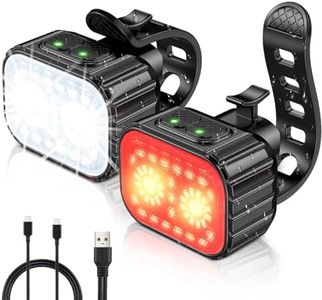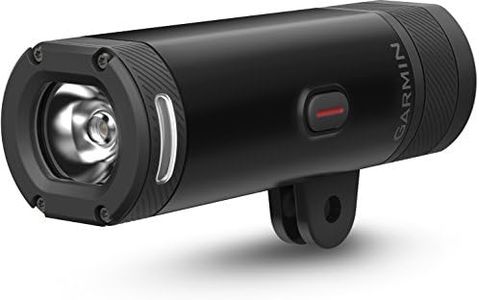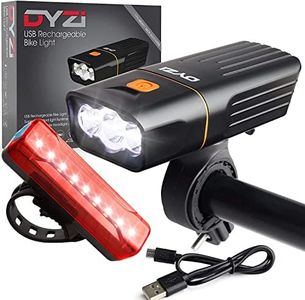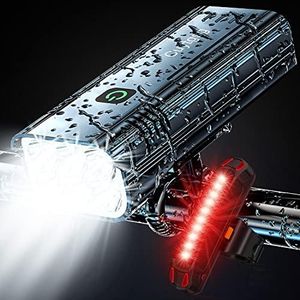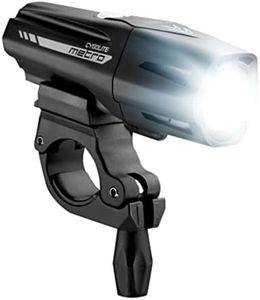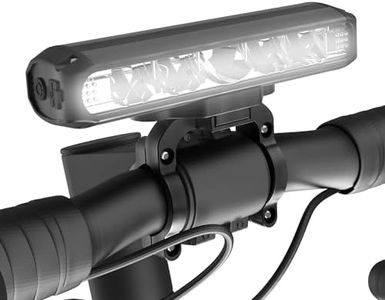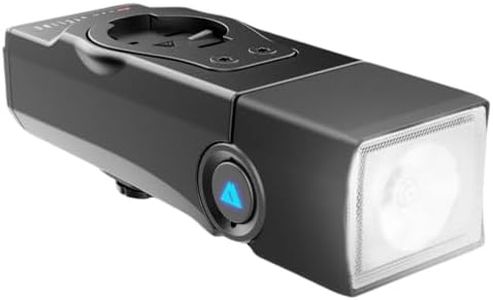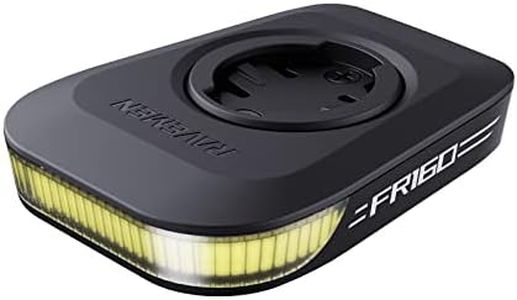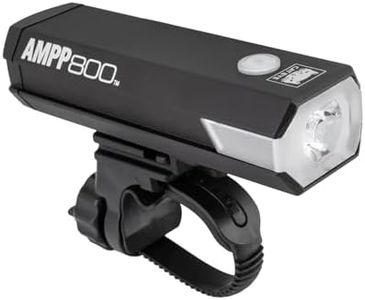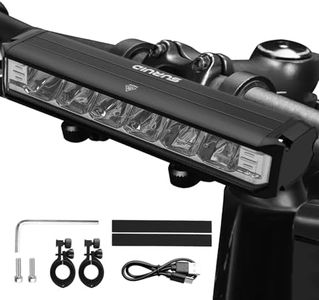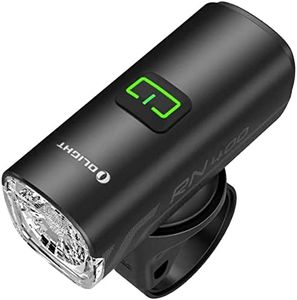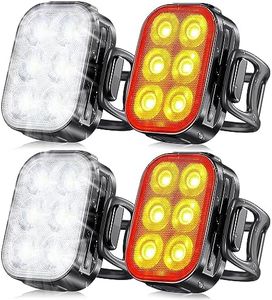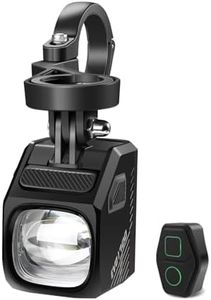We Use CookiesWe use cookies to enhance the security, performance,
functionality and for analytical and promotional activities. By continuing to browse this site you
are agreeing to our privacy policy
10 Best Bike Headlights
From leading brands and best sellers available on the web.Buying Guide for the Best Bike Headlights
Choosing the right bike headlight is essential for both your safety and comfort when riding, especially at night or in low-light conditions. A good bike headlight not only lights your path but also makes you visible to others. Before buying, think about where and when you ride most often—on city streets, country roads, or off-road trails—and consider what you'll need to see and be seen where you ride.Brightness (Lumens)Brightness, measured in lumens, determines how much light the headlight produces. More lumens means a brighter light. For city commuting, a lower to medium brightness (about 100-300 lumens) is usually enough because streets are often already lit. For rural or unlit paths, higher brightness (400 lumens or more) is important to see further ahead and spot obstacles. Choose a brightness that matches what you'll encounter on your rides; more isn't always better if it causes glare or drains your battery too quickly.
Beam PatternThe beam pattern refers to how the light spreads out from the headlight. A wide beam is great for seeing the area around you, which is helpful in urban settings or at slower speeds. A focused or narrow beam throws light further ahead, good for fast rides or dark, straight roads. Consider your typical riding environment and pick a headlight with a beam pattern that helps you see what matters most in your situation.
Battery Type and RuntimeBike headlights use different types of batteries, like rechargeable (USB) or disposable (AA/AAA). Runtime is how long the light will work before needing a recharge or fresh batteries. Longer runtime is vital if you ride long distances or forget to recharge often. If you commute short distances, shorter runtimes might be sufficient. Think about your typical rides and habits before deciding if you need maximum runtime or can get by with less.
Mounting SystemThe mounting system is how you attach the headlight to your bike. Some use straps, clips, or brackets, and some can detach easily for theft prevention or charging. Make sure the mount fits your bike’s handlebar size and is easy to install and remove, especially if you plan on taking the light with you often. Also, check if the light can be tilted or adjusted to aim where you need.
Weather ResistanceWeather resistance tells you how well the headlight handles exposure to rain and dust. Most good bike headlights have at least some level of water resistance, which is important if you ride in all kinds of weather. Look for a headlight rated IPX4 or higher for reliable performance in wet conditions.
Modes and FeaturesMany headlights come with multiple light modes, like steady, flashing, or low-power, which can help save battery or increase visibility. Features like memory function (remembers last setting), side visibility, or low-battery indicators can add convenience or improve safety. Decide which features fit your riding style and needs best.
